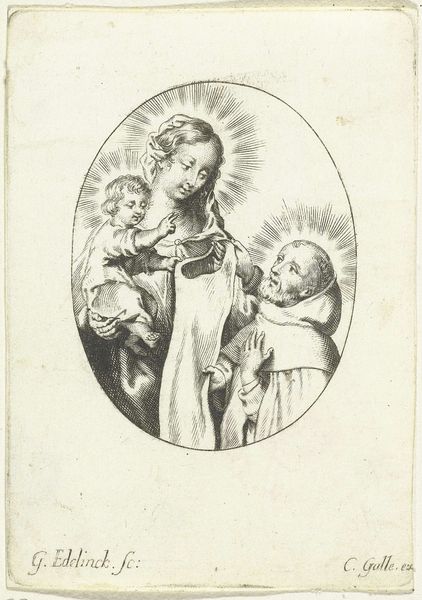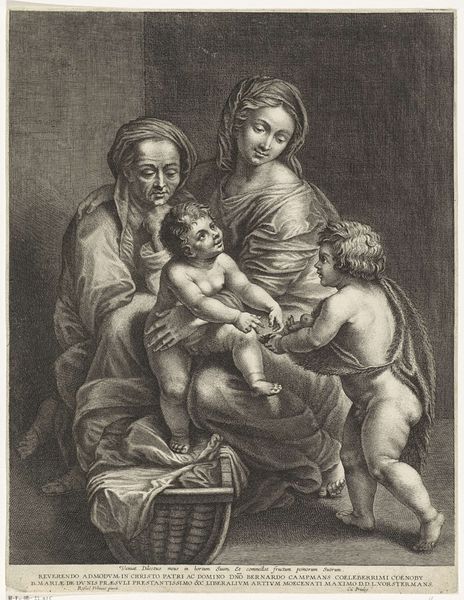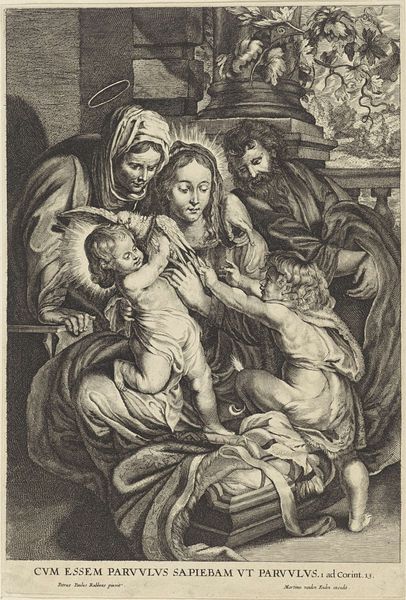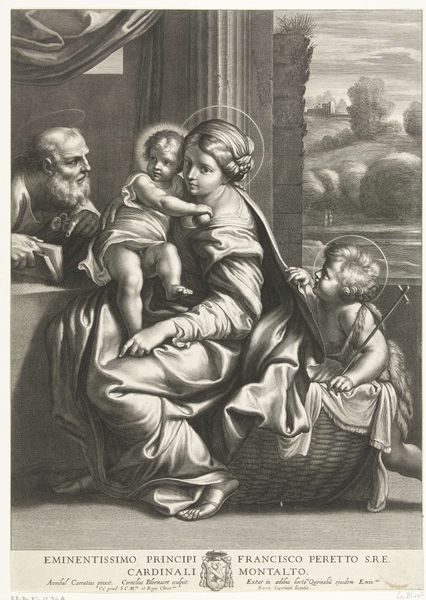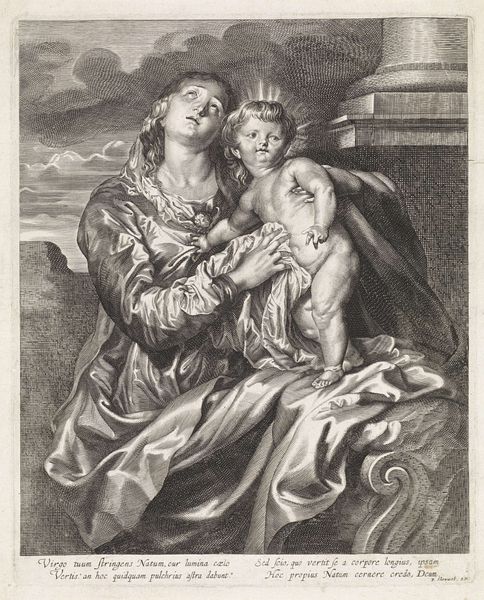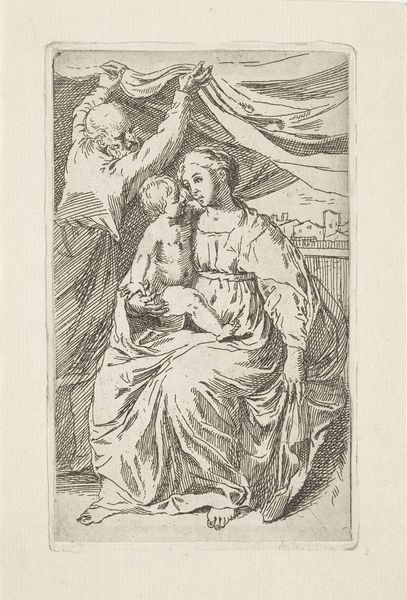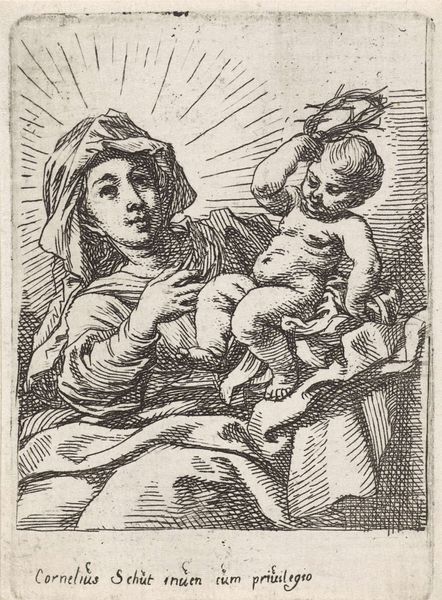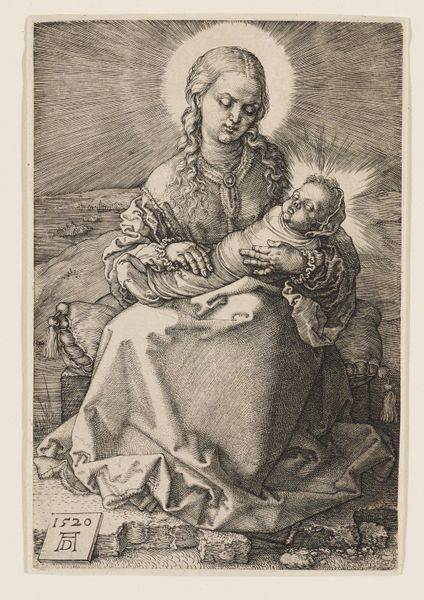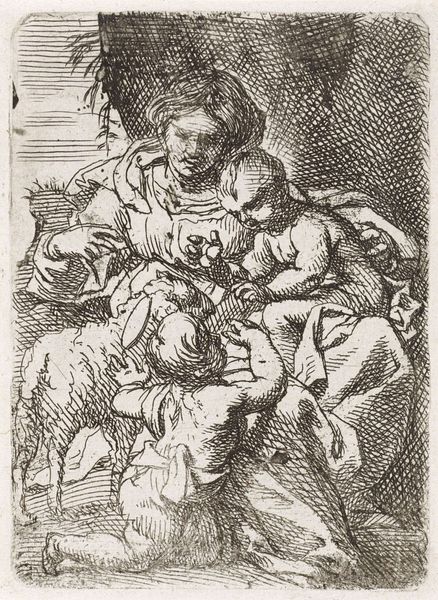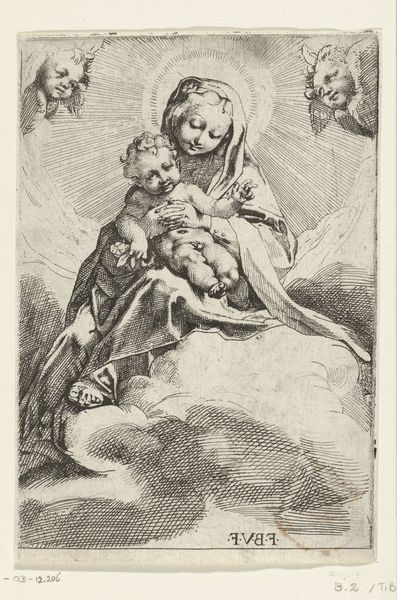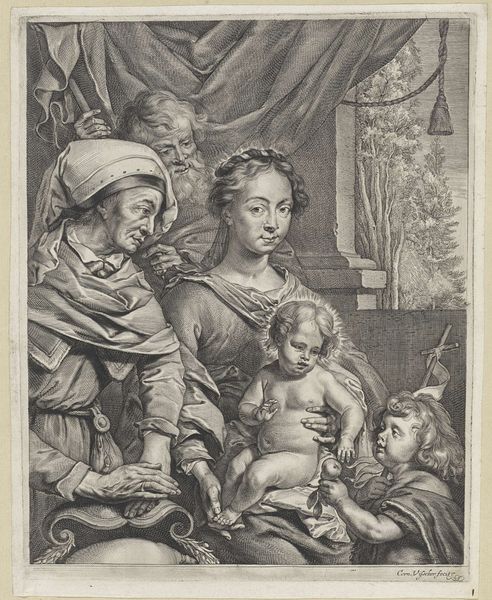
print, engraving
#
portrait
#
allegory
#
baroque
# print
#
old engraving style
#
figuration
#
history-painting
#
engraving
Dimensions: height 272 mm, width 190 mm
Copyright: Rijks Museum: Open Domain
Editor: So here we have "Anna te Drieën," or "Anna, the Three," an engraving made sometime between 1661 and 1684, credited to Gaspar Huybrechts. The use of line is really striking, creating a shimmering effect. How should we approach an interpretation of this piece? Curator: This engraving allows us to think about the labor involved in printmaking during this period. Consider the engraver's painstaking work, each line carefully etched to create tonal variations and define form. It's a devotional image meant for popular consumption. The relatively low cost of the print enabled it to circulate widely. Editor: Right, the "means of production" element is important. But what about the imagery itself, with the three generations of the Holy Family? Curator: It's less about the specific subject, and more about the role these kinds of images played in daily life. Ask yourself: Who would have owned this print? Where would they have kept it? Was it framed? Passed down as an heirloom? These questions lead us to understanding consumption habits and cultural values around this time. The material object gives a tangible connection. Editor: So it's not just about *who* is depicted, but *why* and *how* this particular image became a commodity. How does considering it as an "object" and not just "art" affect its importance? Curator: Precisely. By focusing on the print's materiality and distribution, we see how religious belief was literally materialized and spread through the mechanisms of trade and the labour of skilled artisans. The artistry matters less than the cultural purpose served. Editor: That is a fascinating perspective to remember. Thanks. It highlights the social lives of even seemingly high art religious prints. Curator: Yes. Thinking about production and distribution broadens our perspective.
Comments
No comments
Be the first to comment and join the conversation on the ultimate creative platform.
